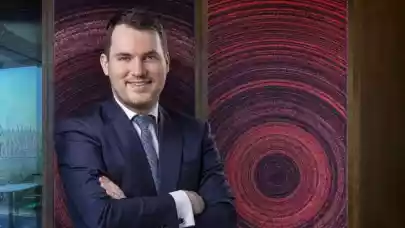
Latest technological innovations may cut time and cost significantly in preparing real estate projects. Property Forum asked Béla Markovich, CEO of construction giant Mapei’s Hungarian subsidiary about the ways the company uses VR and AI to reach higher efficiency and about R+D activity to produce eco-friendly construction materials.
Automation and robotics gain ground in Europe but we see CEE lagging behind most advanced Western countries. What are the reasons?
Indeed, robotics, automation, and mechanisation are increasingly spreading across Europe, but not only there, as they are also gaining ground in our country. Larger construction executing companies and building materials manufacturers are employing machines and robots in more and more places, automating an increasing number of processes. A good example of this is some companies that manufacture prefabricated structures, where the production process is almost entirely automated. There are also more mechanized work processes on construction sites. The widespread adoption of robotics, mechanization, and automation has three main reasons: many companies believe they cannot afford it financially, the still relatively cheaper labour, and the somewhat conservative mindset that is characteristic of the thinking of smaller companies' leaders.

Béla Markovich
CEO
Mapei Hungary
Planning a real estate project, including the construction phase has become even more complex but VR and AI may make the way easier to succeed. Give us some examples of the efficiency of both tools.
Artificial intelligence makes it easier for customers to design the home of their dreams, with personalised designs and optimised use of space. Virtual reality allows a preview of the planned spaces, helping to refine spatial concepts. Both technologies reduce ambiguities in the design process, allowing clients to communicate their ideas more accurately. The use of AI and VR will lead to significant efficiency gains in the design and delivery of real estate projects. These innovations increase client satisfaction while reducing project lead times and costs.
We heard that 3D printing of buildings is very popular with many construction projects. How does it make costs much lower than the existing, normal method? Is it used in residential buildings as well or just for industrial ones?
3D printing is revolutionizing the construction industry, offering significant cost reductions and efficiency improvements. The use of Planitop 3D printing ink significantly reduces labour requirements and material waste, while speeding up the construction process. Construction projects, including residential buildings, can now be completed faster and with less financial outlay. The technology complies with international construction codes, allowing for its widespread application across various types of buildings. Thus, 3D-printed construction solutions are effective not only for industrial buildings but also for residential constructions.
Lowering the ecological footprint is a must when using construction materials. What are the latest results in R+D to produce eco-friendly materials?
Most responsible manufacturing and construction companies should focus on supporting sustainable development through their operations and products. This should be an obligation for every company. At Mapei, all developments are aimed in this direction: product development, expansion of factories and plants, and renovation of our office. When developing products, we keep in mind the CO2 footprint of the product, striving to keep it at the lowest possible level, as well as human health. Our products are designed to avoid emitting harmful volatile organic compounds to human health. Furthermore, part of our developments aims to use recycled materials in a higher proportion in new products.
Recycling is also a top priority in many parts of the economy. How construction companies are prepared to reach a bigger proportion of reused materials?
Building material manufacturers, including Mapei, are consciously developing products that increasingly utilize recycled materials. For example, we have a development called Re-Con Zero, which allows us to make unused concrete reusable. Construction companies also strive to use building products manufactured with recycled materials. Furthermore, many construction companies care about selectively collecting construction waste on-site and ensuring it is sent to processors accordingly.



